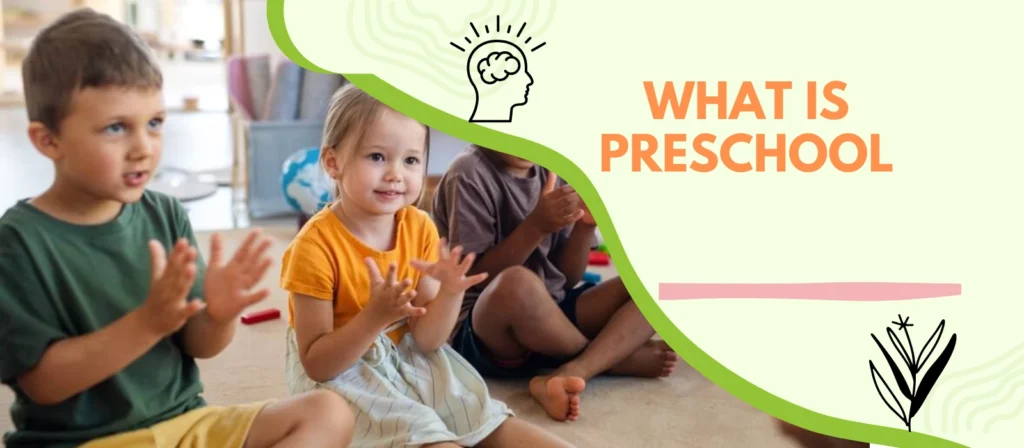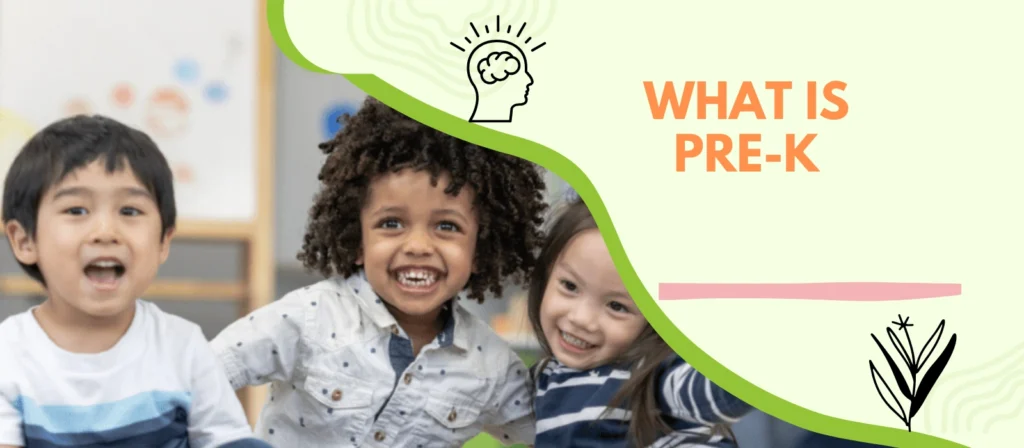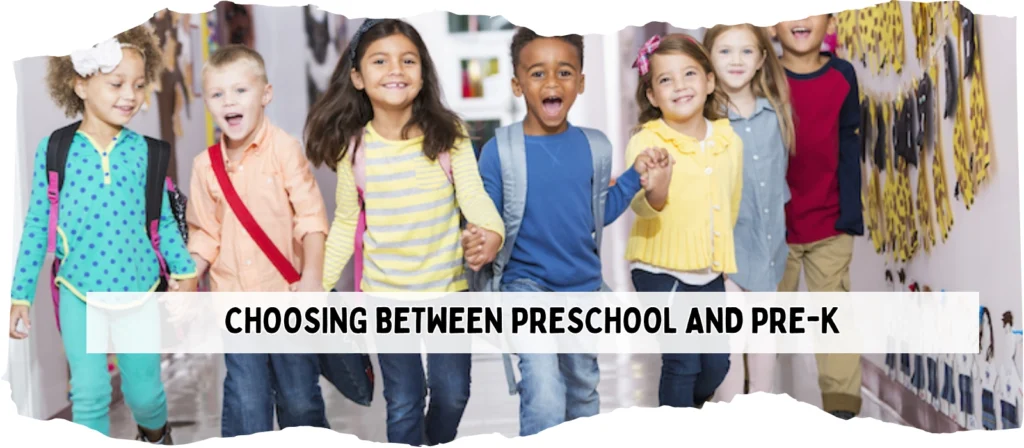Have you ever wondered what really sets preschool vs pre k apart? Do both programs serve the same purpose, or are they designed for different stages of a child’s growth? For parents, kindergarten directors, and educators, the confusion is real. Choosing the right path can feel overwhelming when preparing children for school success.
The truth is, preschool and pre-k are not the same, and understanding the difference matters. Preschool provides a nurturing introduction to structured learning, while pre-k focuses more on kindergarten readiness. Knowing these differences ensures that children receive the right support at the right time—academically, socially, and emotionally.
This article will help you cut through the confusion, explore the key differences, and make informed decisions for your children, your school, or your kindergarten program.
Preschool vs Pre-K: Why the Confusion?
The terms preschool vs pre k are often used interchangeably, which fuels the misunderstanding. Parents may enroll their child in a program labeled “preschool,” only to later discover that the structure and learning goals differ significantly from what another school calls “pre-k.” In reality, these terms reflect different stages of early education. Preschool generally serves younger children, often ages 2–4, while pre-k is typically for 4–5-year-olds who are close to entering kindergarten.
Another source of confusion is regional and cultural differences. In some countries, “preschool” is the umbrella term for all early childhood education before kindergarten, while in the U.S., there’s a sharper distinction between preschool and pre-k. Schools, districts, and even state education departments use the terms differently, adding to the challenge for parents and educators trying to make the right choice.
The overlap between play-based learning and academic preparation also blurs the lines. Both environments include activities like storytelling, group play, and arts and crafts. However, pre k vs preschool programs often emphasize different outcomes: preschool aims to build basic socialization and motor skills, while pre-k develops literacy, numeracy, and problem-solving abilities that prepare children directly for kindergarten. Understanding these nuances prevents misalignment between expectations and reality, helping families and institutions plan more effectively.

What is Preschool?
Definition and Purpose
Preschool is an early childhood education program designed primarily for children between the ages of 2 and 4. It serves as the child’s first formal step into a structured learning environment, bridging the gap between home care or daycare and more academically oriented programs. The main goal of preschool is to nurture a child’s natural curiosity while developing foundational skills that support later academic success.
Classroom Environment and Teaching Style
A preschool classroom emphasizes play-based learning. Through storytelling, building blocks, art projects, and music, children learn to interact with peers, follow directions, and build communication skills. These experiences strengthen social-emotional growth, which is as important as cognitive development at this stage. Teachers in preschool settings are trained to focus on guiding children gently through routines, introducing them to group participation, and helping them practice patience, sharing, and problem-solving.
Skill Development
Preschool also focuses on developing motor skills. Activities like drawing, cutting with child-safe scissors, and outdoor play improve fine and gross motor coordination. These seemingly simple tasks play a critical role in preparing children for the demands of later schooling. Moreover, preschools provide children with exposure to early numeracy and literacy concepts, such as recognizing letters, learning sounds, counting, and identifying shapes.
Why Parents Choose Preschool
Parents often choose preschool not only for its academic foundation but also for the structured social environment. Unlike daycare, where the primary focus is care and safety, preschool offers intentional opportunities for learning. It introduces children to the idea that education can be fun and engaging, laying the groundwork for a positive attitude toward future schooling. Preschool is especially beneficial for children who may not have regular opportunities for structured play or peer interaction at home.
Program Variety
From an institutional perspective, preschool programs vary widely in curriculum and philosophy. Some adopt Montessori or Reggio Emilia approaches, while others follow state or nationally approved early childhood frameworks. Regardless of method, the emphasis remains on fostering independence, curiosity, and social readiness, ensuring children are prepared to thrive when they advance to pre-k or kindergarten.

What is Pre-K?
Definition and Purpose
Pre-kindergarten, often shortened to pre-k, is designed for children around the ages of 4 and 5 who are preparing to enter kindergarten. Unlike preschool, which introduces children to group learning and basic routines, pre-k focuses more deliberately on school readiness. The program bridges the gap between play-based preschool activities and the more academic expectations of kindergarten.
Age Group and Readiness
Most pre-k programs enroll children who will attend kindergarten within a year. The curriculum is designed to strengthen cognitive, social, and emotional skills so that children can transition smoothly into the elementary school environment. By this stage, children are ready for more structured routines, longer attention spans, and deeper learning experiences.
Curriculum Focus
The pre-k curriculum emphasizes foundational academic skills. Early literacy activities involve recognizing letters, beginning to read simple words, and practicing phonemic awareness. Numeracy lessons may include counting, sorting, pattern recognition, and simple addition. Teachers also introduce problem-solving exercises, science exploration, and early writing activities. The goal is not to rush academic achievement but to prepare children with the tools and confidence needed for kindergarten success.
Social and Emotional Development
Alongside academics, pre-k places a strong emphasis on collaboration, empathy, and conflict resolution. Group projects, role play, and guided discussions encourage children to express themselves clearly and respectfully. This social-emotional development ensures that children not only enter kindergarten with academic knowledge but also with the maturity to thrive in a group learning environment.
Teacher Qualifications and Structure
Pre-k teachers are often required to have higher levels of training or certification compared to preschool educators, depending on regional regulations. Class sizes may be slightly larger, but the learning environment is more structured. Daily schedules typically include blocks of academic instruction, creative play, physical activity, and quiet reflection time, balancing both structure and flexibility.
Why Families and Schools Value Pre-K
Families see pre-k as a vital step in preparing their child for kindergarten’s challenges. For schools and kindergartens, pre-k programs ensure children arrive with consistent foundational skills, reducing the need for remedial support later. Research consistently shows that children who attend high-quality pre-k programs perform better academically and socially in their early school years, making this stage of education a key investment in long-term success.
Preschool vs Pre-K: Key Differences
Age Range Comparison
When comparing preschool vs pre k, one of the clearest differences is age. Preschool generally enrolls children from 2 to 4 years old, while pre-k serves children around 4 to 5 who are about to enter kindergarten. Parents searching for preschool vs pre-k vs kindergarten often discover that the age overlap causes confusion, but the developmental focus at each stage is distinct.
Learning Focus and Outcomes
Preschool vs pre-k programs also differ in their educational goals. Preschool emphasizes early exposure to social interaction, language development, and motor skills. Pre-k, on the other hand, builds directly toward kindergarten readiness, emphasizing literacy, numeracy, and problem-solving. This distinction makes the preschool vs pre-k decision important for families seeking the best path for their child’s growth.
Social Development and Group Skills
Both preschool and pre-k develop social skills, but the depth varies. Preschool focuses on basic sharing, turn-taking, and play cooperation. Pre-k expands this into teamwork, empathy, and conflict resolution. Parents who compare pre k vs preschool quickly realize that pre-k encourages more advanced communication and group dynamics essential for kindergarten classrooms.
Teacher Training and Classroom Structure
Another key point in preschool vs pre-k comparisons is the teacher qualification and class design. Preschool teachers may hold early childhood training suited to guiding toddlers and younger learners. Pre-k teachers often require certifications that prepare them for structured academic preparation. The classroom setting in preschool feels more flexible and exploratory, while pre-k follows a routine closer to kindergarten expectations.
Academic Readiness and Long-Term Impact
The long-term impact of preschool vs pre-k is significant. Preschool builds the foundation of curiosity, independence, and social comfort. Pre-k ensures children are academically and emotionally ready for kindergarten challenges. Studies show that children who attend quality pre-k programs often outperform peers who skipped this stage, highlighting why families must carefully weigh preschool vs pre-k vs kindergarten options.
By understanding these differences clearly, parents, educators, and kindergarten directors can make informed choices. Comparing pre-k vs preschool is not just a matter of terminology—it is about ensuring that every child receives the right kind of preparation for success in school and beyond.
Preschool vs Pre-K Comparison Table
| Aspect | Preschool | Pre-K |
|---|---|---|
| Typical Age Range | 2–4 years old | 4–5 years old |
| Main Purpose | Introduction to group learning and routines | Preparation for kindergarten readiness |
| Curriculum Style | Play-based, exploratory | Structured, academic-focused with play support |
| Key Skills Developed | Socialization, basic motor skills, early language | Literacy, numeracy, problem-solving, collaboration |
| Teacher Qualifications | Early childhood training | Often higher certification, closer to kindergarten level |
| Classroom Structure | Flexible, emphasis on exploration | More structured, routines similar to kindergarten |
| Social-Emotional Development | Sharing, turn-taking, early peer interaction | Empathy, teamwork, conflict resolution |
| Academic Readiness | Lays foundation for curiosity and independence | Direct preparation for kindergarten success |
| Long-Term Impact | Builds confidence and love for learning | Ensures smoother transition and stronger performance in kindergarten |
Preschool vs Pre-K vs Kindergarten
When families and educators compare preschool vs pre k vs kindergarten, they often realize that each stage builds progressively on the previous one. Preschool introduces children to routines, pre-k strengthens academic readiness, and kindergarten transitions children into formal schooling. The preschool vs pre-k vs kindergarten sequence ensures that development happens step by step, covering both social-emotional learning and academic foundations.
Preschool focuses on creating curiosity and comfort in a group setting. Pre-k refines these skills, adding structured literacy and numeracy. Kindergarten then consolidates everything into a formal school environment with subject-specific learning like reading, writing, math, and science. Parents deciding between preschool vs pre-k vs kindergarten must understand that skipping one stage may leave gaps in preparation, affecting confidence and performance in later years.
Preschool vs Pre-K vs Kindergarten Comparison Table
| Aspect | Preschool | Pre-K | Kindergarten |
|---|---|---|---|
| Typical Age Range | 2–4 years old | 4–5 years old | 5–6 years old |
| Main Purpose | Introduction to group learning and routines | Preparation for kindergarten readiness | Formal schooling with structured academics |
| Curriculum Style | Play-based, exploratory | Structured, academic-focused with play support | Core subjects: reading, writing, math, science |
| Key Skills Developed | Socialization, basic motor skills, early language | Literacy, numeracy, problem-solving, collaboration | Advanced literacy, numeracy, independent learning |
| Teacher Qualifications | Early childhood training | Higher certification, early education specialization | State-certified elementary teachers |
| Classroom Structure | Flexible, emphasis on exploration | More structured, routines similar to kindergarten | Fully structured academic schedule |
| Social-Emotional Development | Sharing, turn-taking, early peer interaction | Empathy, teamwork, conflict resolution | Responsibility, independence, group collaboration |
| Academic Readiness | Lays foundation for curiosity and independence | Direct preparation for kindergarten success | Builds academic mastery for elementary grades |
| Long-Term Impact | Builds confidence and love for learning | Ensures smoother transition and stronger performance in kindergarten | Establishes long-term academic path and learning habits |

Pre-K vs Preschool: Which One is Right for Your Child?
Why the Decision Matters
Choosing between preschool vs pre k is one of the most important decisions parents can make in the early years of a child’s life. The decision is not just about terminology; it directly impacts how well a child will transition into kindergarten. Many parents wonder whether their child needs both stages or if one is enough. The answer depends largely on the child’s age, developmental stage, personality, and family goals.
When Preschool is the Best Choice
Preschool is ideal for younger children, often starting around age two. If your child has not yet had regular exposure to group learning, peer interaction, or structured routines, preschool offers the perfect introduction. The preschool vs pre-k comparison shows that preschool lays the foundation for socialization and curiosity. If your child is shy, still developing basic motor skills, or new to separation from parents, preschool is the gentler starting point.
When Pre-K is the Best Choice
Pre-k, on the other hand, is designed specifically for children who are one step away from kindergarten. Parents evaluating pre k vs preschool must remember that pre-k is about readiness for formal schooling. If your child is four or five, already comfortable with play-based environments, and showing interest in letters, numbers, or storytelling, then pre-k provides the structured preparation needed for a smooth transition. Pre-k is not about pressuring children into academics too early, but about giving them confidence and competence before kindergarten begins.
Other Considerations for Parents
Parents should also consider practical factors such as cost, availability, and program philosophy. For example, Montessori-inspired preschools might emphasize independence and exploration, while some pre-k programs may align more closely with state kindergarten standards. Comparing preschool vs pre-k vs kindergarten helps families understand the long-term pathway and prevents skipping critical developmental steps.
How to Make the Right Decision
A useful strategy is to observe your child’s behavior and consult teachers or pediatric specialists. Does your child thrive in free play but struggle with structure? Then preschool may still be the right environment. Does your child ask to read, count, or engage in cooperative games? Then pre-k may be the best fit. Trusting these cues makes the preschool vs pre-k decision more personalized and effective.
Final Thoughts for Families
Ultimately, there is no one-size-fits-all answer. Some children attend both preschool and pre-k, gaining the benefits of gradual progression. Others may transition directly from home care to pre-k if they are developmentally ready. The important thing is to ensure that whichever path is chosen, the child receives consistent support in both social-emotional development and early academics.
By carefully comparing preschool vs pre-k and weighing the needs of your child, parents can make a confident choice. The goal is not just school readiness, but a lifelong love of learning.
Preschool vs Pre-K in Educational Policy
Licensing and Regulations
Educational policy plays a central role in defining preschool vs pre k programs. In many regions, preschools and pre-k centers must meet licensing requirements related to safety, teacher qualifications, and classroom ratios. Some states or countries mandate specific curricula for pre-k programs to align with kindergarten standards, while preschools may have more flexibility.
Quality Standards and Accreditation
Beyond basic licensing, quality standards such as national accreditation help families distinguish between average and high-quality programs. Accreditation agencies evaluate curriculum design, teacher preparation, and child outcomes. When comparing pre k vs preschool, parents should ask whether the program follows recognized standards that ensure consistency and reliability.
Government Funding and Access
In some countries, pre-k is publicly funded or subsidized to ensure wider access, especially for families in underserved communities. Preschool vs pre-k funding differences can affect affordability and enrollment decisions. Parents comparing preschool vs pre-k vs kindergarten need to check what financial support options are available in their region.
Long-Term Educational Outcomes
Policy makers emphasize preschool vs pre-k because research shows clear long-term benefits. Studies demonstrate that children who attend high-quality pre-k are more likely to succeed academically and socially in later school years. Preschool provides important early exposure, while pre-k delivers structured readiness, making both stages essential in comprehensive early education policy.
Common Myths About Preschool and Pre-K
Myth 1: Preschool and Pre-K Are the Same
A frequent misconception is that preschool vs pre k refers to the same program. In reality, they target different age groups and have distinct purposes. Preschool emphasizes exploration and socialization, while pre-k focuses on preparing children academically and emotionally for kindergarten.
Myth 2: Pre-K Is Only for Advanced Children
Some parents believe pre-k is unnecessary unless their child is academically advanced. In fact, pre-k is designed for all children who are nearing kindergarten age. It ensures that every child, regardless of ability, develops the foundational skills for school readiness.
Myth 3: Preschool Is Not Important if Pre-K Is Attended
Another myth is that preschool can be skipped if a child goes directly to pre-k. While some children can transition successfully, skipping preschool may mean missing critical opportunities for early socialization and basic motor skill development.
Myth 4: Academic Pressure in Pre-K Is Too High
Parents sometimes worry that pre-k will be too rigid. Quality pre-k programs balance structured literacy and numeracy lessons with creative play and social-emotional growth. The goal is to prepare children gently, not overwhelm them.
Myth 5: Preschool vs Pre-K Has No Long-Term Impact
Research consistently shows that attending both preschool and pre-k has lasting benefits. Children demonstrate stronger academic performance, better social skills, and greater confidence throughout elementary school.
Conclusion
Preschool vs pre k is not just a matter of words—it represents two vital stages of early education. Preschool nurtures curiosity and social skills, while pre-k ensures academic and emotional readiness for kindergarten. For families and school directors, understanding these differences is the key to planning a smooth path toward success.
At XIHA Furniture, we support kindergartens and preschools worldwide with safe, high-quality, and affordable furniture solutions that create the right environment for every stage. By choosing the right program and the right learning space, you are investing in a child’s future with confidence.



